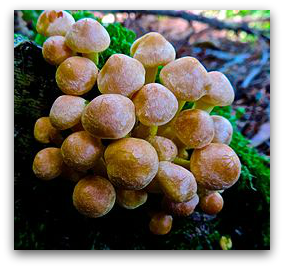
Image: Peter Stevens
Wild mushrooms have recently made a surprising (but not unwelcome) foray into the battery realm.
In a new study, researchers from Purdue University derived promising carbon fibers from a wild mushroom and modified them with nanoparticles to cook up new battery anodes that outperform conventional graphite electrodes for lithium-ion batteries.
(READ: “Wild Fungus Derived Carbon Fibers and Hybrids as Anodes for Lithium-Ion Batteries“)
Outperforming traditional anodes
“Current state-of-the-art lithium-ion batteries must be improved in both energy density and power output in order to meet the future energy storage demand in electric vehicles and grid energy-storage technologies,” said Vilas Pol, ECS member and associate professor at Purdue. “So there is a dire need to develop new anode materials with superior performance.”
This from Purdue University:
[The researchers] have found that carbon fibers derived from Tyromyces fissilis and modified by attaching cobalt oxide nanoparticles outperform conventional graphite in the anodes. The hybrid design has a synergistic result.


